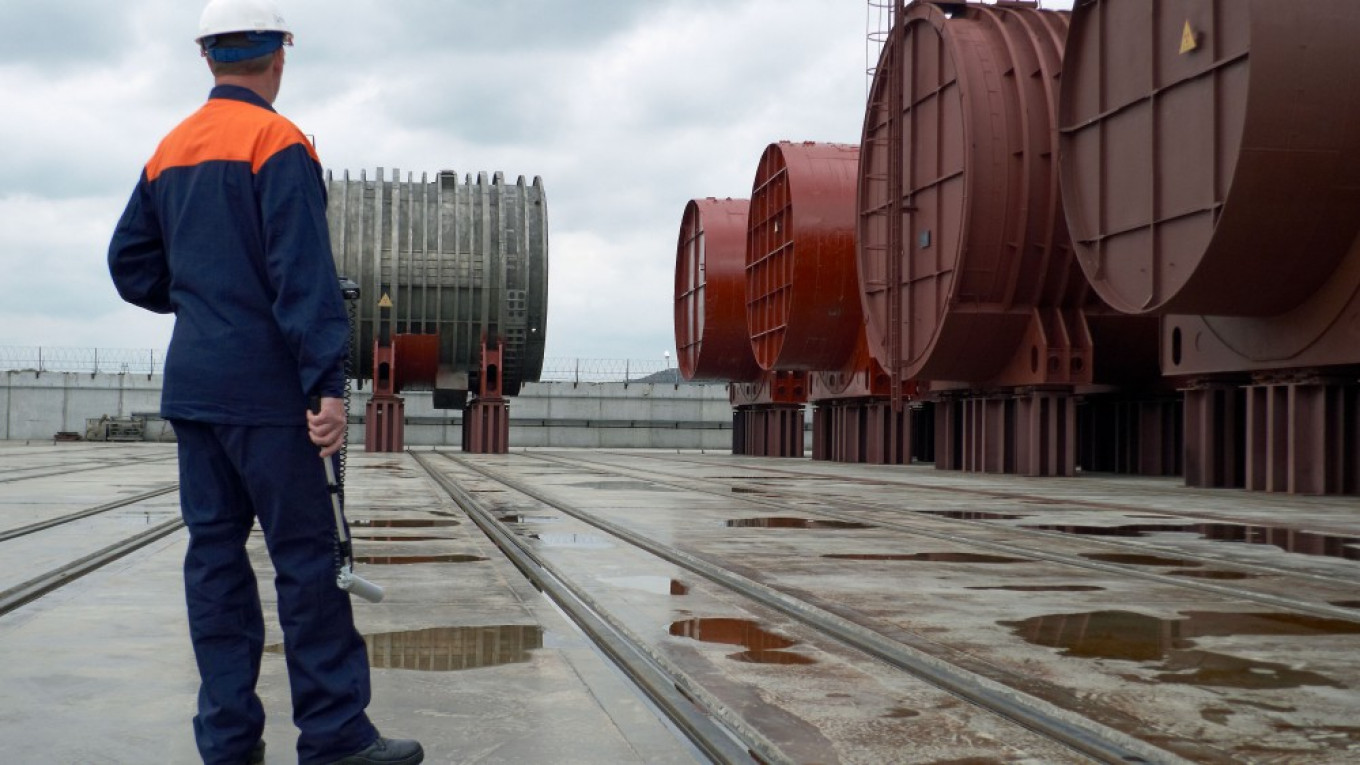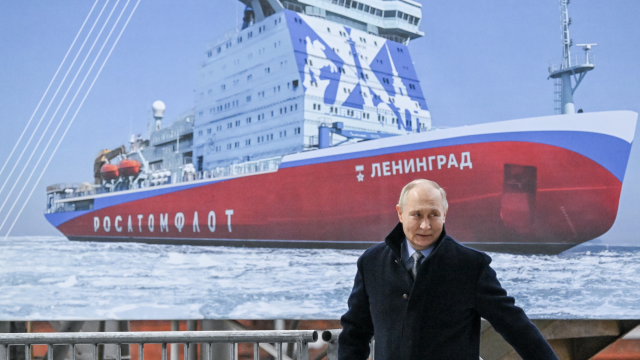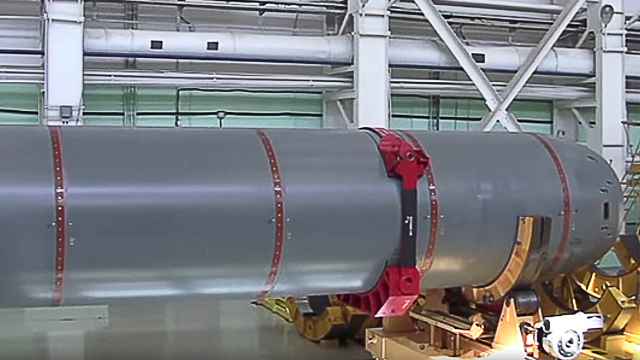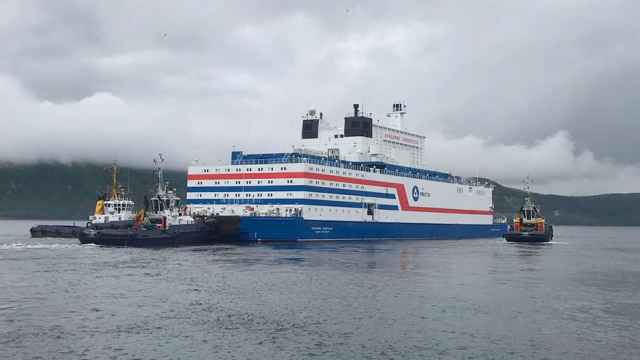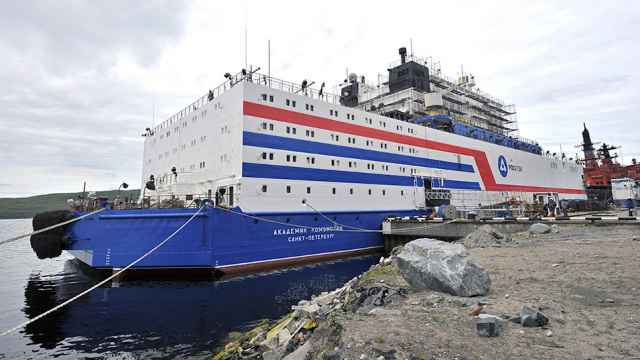On the night of Aug. 8, the last of 120 reactor compartments from Cold War-era submarines were docked and brought safely into the storage pad in Saida Bay on the Kola Peninsula.
Bringing the last reactors onshore improves the environmental situation in the Barents Sea, said SevRAO, the northern branch of Russia’s state radioactive waste management company.
The compartment, which is holding two reactors, comes from one of the Northern Fleet's largest nuclear-powered submarines. It will now be readied for long-term storage at the huge pad in Saida Bay, which previously held at least 116 reactor compartments.
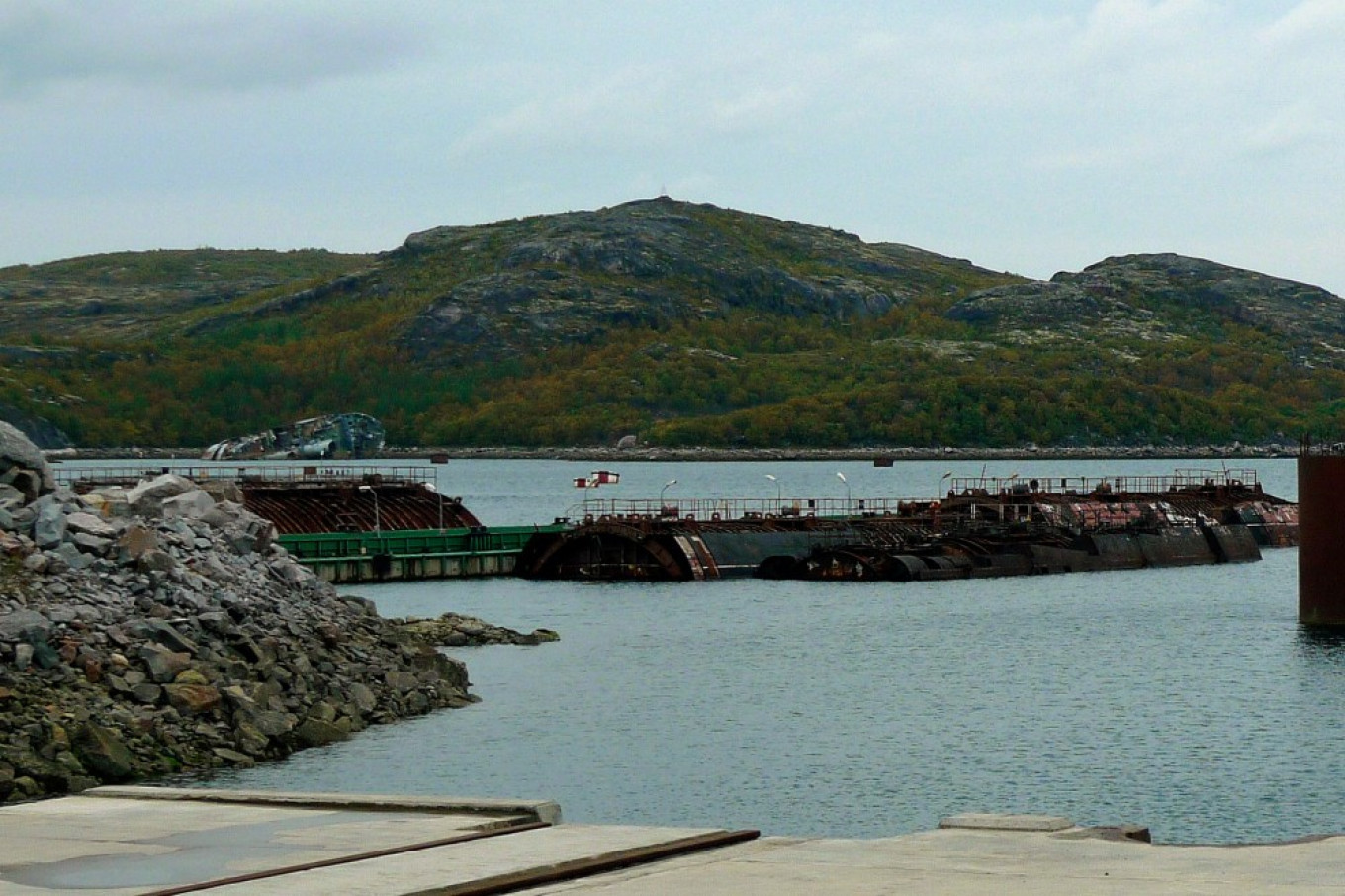
Most nuclear-powered submarines built by the Soviet Union had two reactors, bringing the total number of reactors stored at the site up to nearly 200.
Kursk submarine
Last year, RosRAO’s chief engineer said the very last reactor compartment to be taken onshore would be that of the Kursk submarine, which sank in the Barents Sea in August 2000 during a naval exercise. The submarine was lifted from the seabed two years later and the remaining parts of the hull were scrapped.
It was only recently that the Kursk compartment became one of the last of the three remaining reactor compartments that were stored on waters just outside the facility.
A satellite photo taken last summer shows that the storage pad in Saida Bay will soon be filled to capacity.
Although the spent nuclear fuel elements are removed, the reactor itself is radioactive and has to be treated with special care to avoid leaks into the environment. When floating, one fear was that the reactors would sink and flood with water.
The process of scrapping the 120 nuclear-powered submarines that sailed out from bases on the Kola Peninsula during the Cold War started in the early 1990s and has been technically and economically supported by a wide range of countries and intergovernmental bodies, including Norway and the European Union.
The storage site in Saida Bay is financed by Germany as part of the Global Partnership Against the Spread of Weapons and Materials of Mass Destruction. Italy has contributed funding for the floating dock that transports the reactor compartments from the waters to the site.
In addition to reactors from military submarines, the site will also hold icebreaker reactors and radioactive sections from military and civilian service vessels, like the Lepse and the icebreakers Sibir and Arktika.
The reactor compartments will have to be stored for onshore for many decades before their radiation levels come down to levels acceptable for cutting up the reactors’ metal and packing it for final geological disposal.
Many new submarines
While the old submarines have been scrapped, Russia is today building more nuclear-powered vessels than ever before since the end of the Cold War.
According to a recently published overview, there are 39 nuclear-powered vessels or installations in the Russian Arctic today, with a total of 62 reactors. This includes 31 submarines, one surface warship, five icebreakers, two onshore nuclear plants and one floating nuclear plant.
Looking 15 years ahead, the number of ships, including submarines, and installations powered by reactors is estimated to increase to 74 with a total of 94 reactors, maybe as many as 114. Additional to new icebreakers and submarines already under construction, Russia is brushing off the dust of older Soviet ideas of utilizing nuclear-power for different kinds of Arctic shelf industrial developments, like oil and gas exploration, mining and research. "By 2035, the Russian Arctic will be the most nuclearized waters on the planet," the paper says.
Russia's existing icebreakers and submarines will also enjoy prolonged lifespans. The average age of the Northern Fleet’s nuclear-powered submarines has never been higher than it is today. Several of the submarines built in the 1980s will continue to sail the Barents Sea and under the Arctic ice-cap until the late 2020s.
A Message from The Moscow Times:
Dear readers,
We are facing unprecedented challenges. Russia's Prosecutor General's Office has designated The Moscow Times as an "undesirable" organization, criminalizing our work and putting our staff at risk of prosecution. This follows our earlier unjust labeling as a "foreign agent."
These actions are direct attempts to silence independent journalism in Russia. The authorities claim our work "discredits the decisions of the Russian leadership." We see things differently: we strive to provide accurate, unbiased reporting on Russia.
We, the journalists of The Moscow Times, refuse to be silenced. But to continue our work, we need your help.
Your support, no matter how small, makes a world of difference. If you can, please support us monthly starting from just $2. It's quick to set up, and every contribution makes a significant impact.
By supporting The Moscow Times, you're defending open, independent journalism in the face of repression. Thank you for standing with us.
Remind me later.


